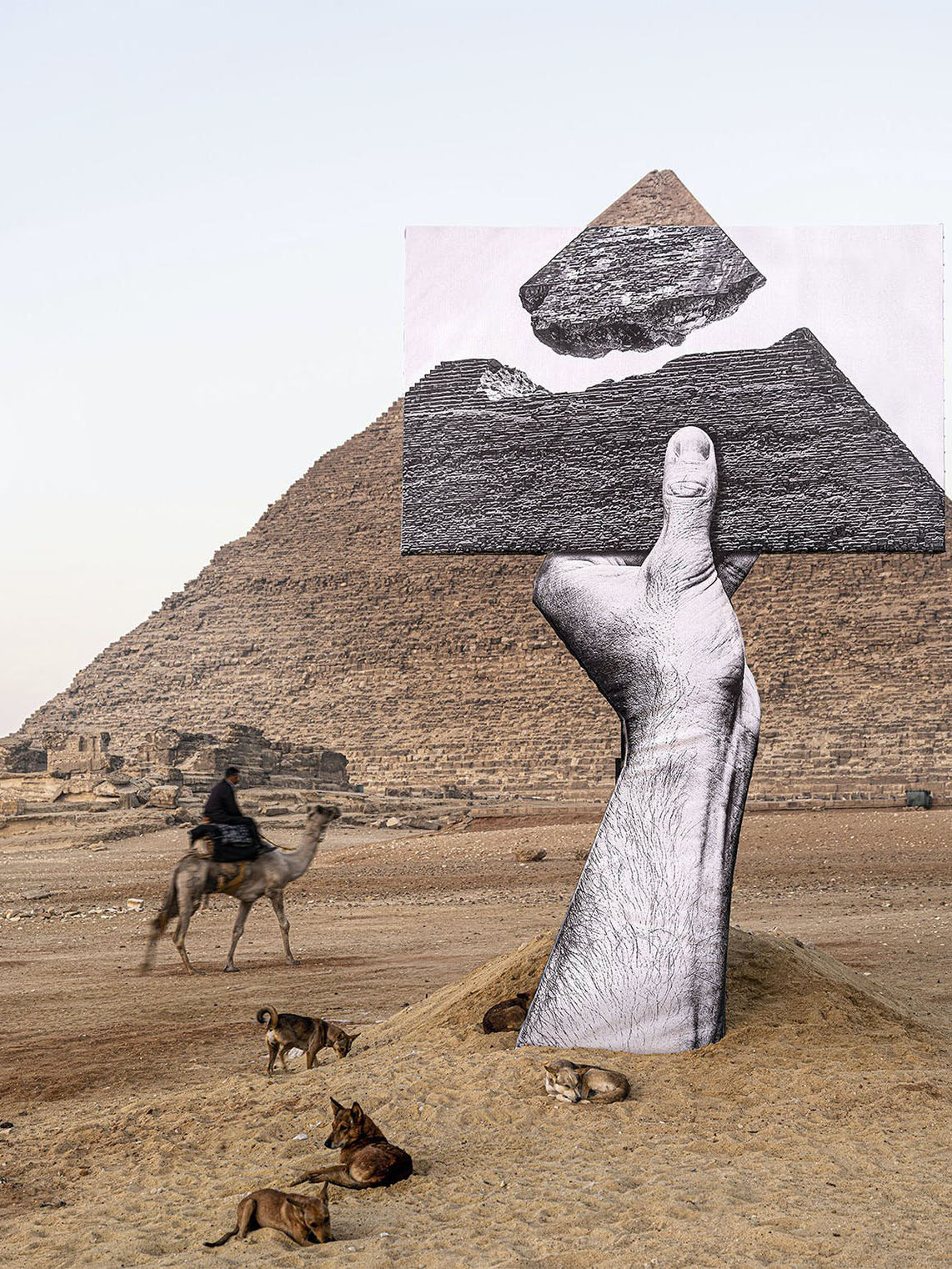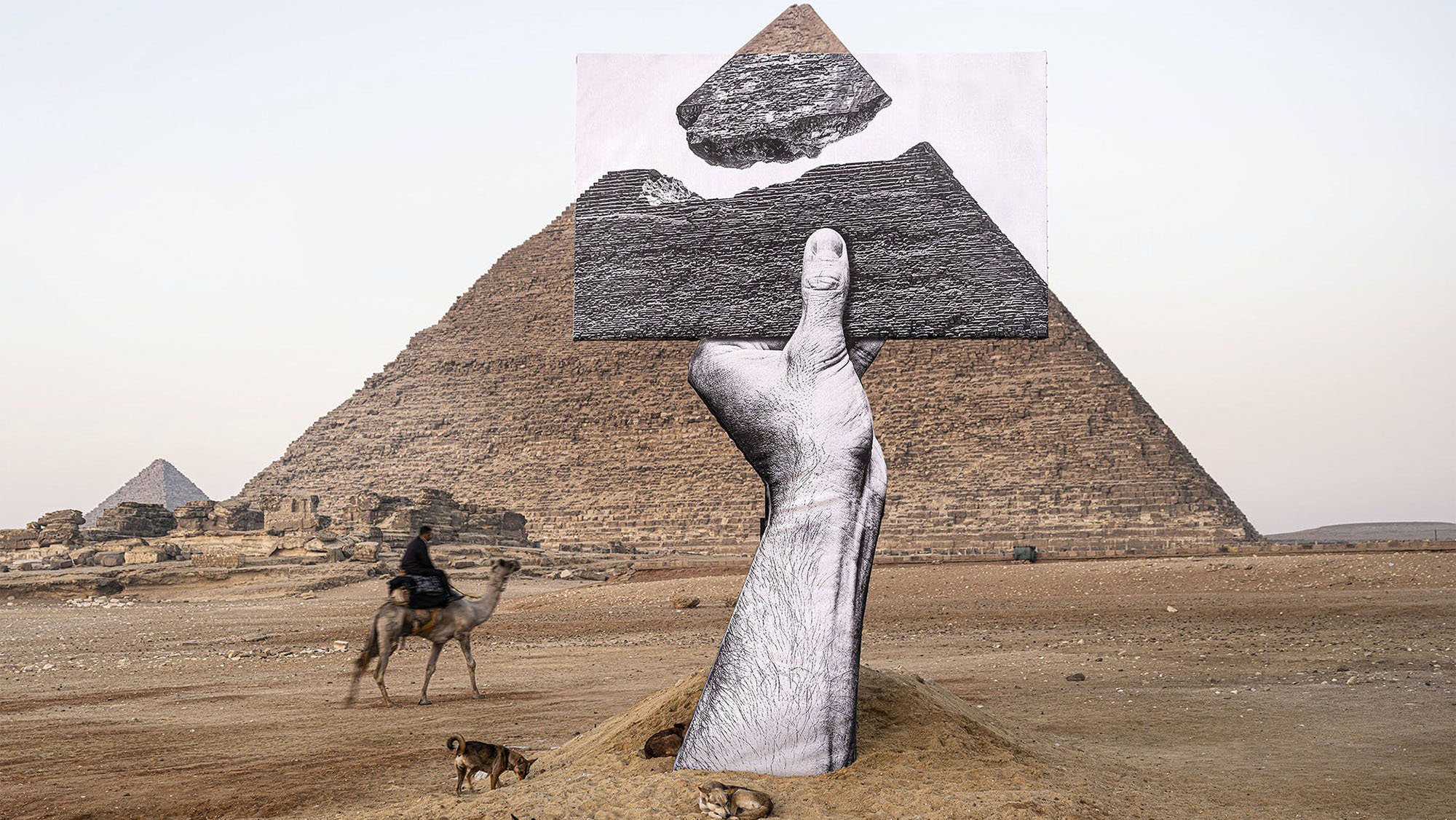When "ancient" meets "contemporary"
Art D'Egypte is a private multidisciplinary Egyptian company established to promote Egyptian culture and art. “Forever is Now” is the organization’s 4th annual exhibition, taking place in a very special place, the area right next to one of the Seven Wonders of the Ancient World - the Pyramids of Giza and the surrounding plateau.
To carry out this project, Art D'Egypte had to face many challenges, among which convincing the Egyptian authorities was extremely difficult as they always attached great importance to the preservation and protection of the Pyramids, and at the same time did not care about contemporary art. But in the end, the exhibition was still successful with the patronage of the Egyptian Ministry of Tourism and Antiquities, the Egyptian Ministry of Foreign Affairs and UNESCO.
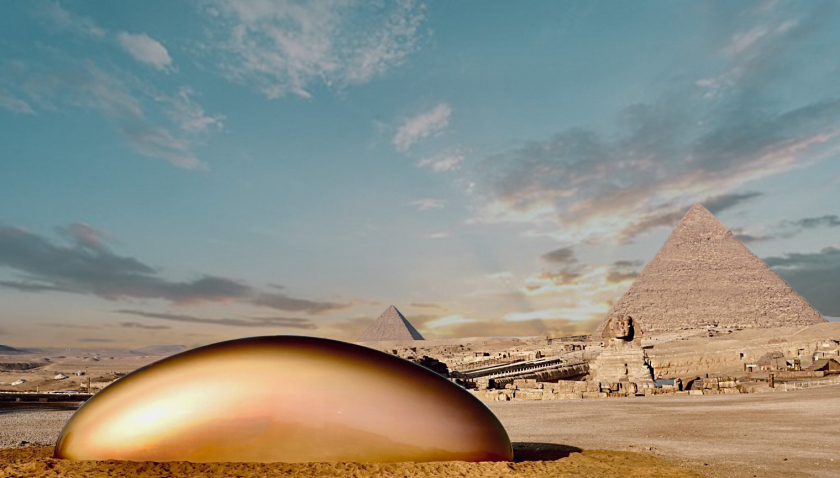
"Eternity now" by American artist Gisela Colon.
Many artists from Egypt and many countries around the world came to participate in “Forever Is Now”. What made this art exhibition attract so much attention was the unique combination of contemporary art with the world’s oldest ancient heritage, which is also the last remaining wonder of the Seven Wonders of the Ancient World, recognized by UNESCO as a World Heritage Site.
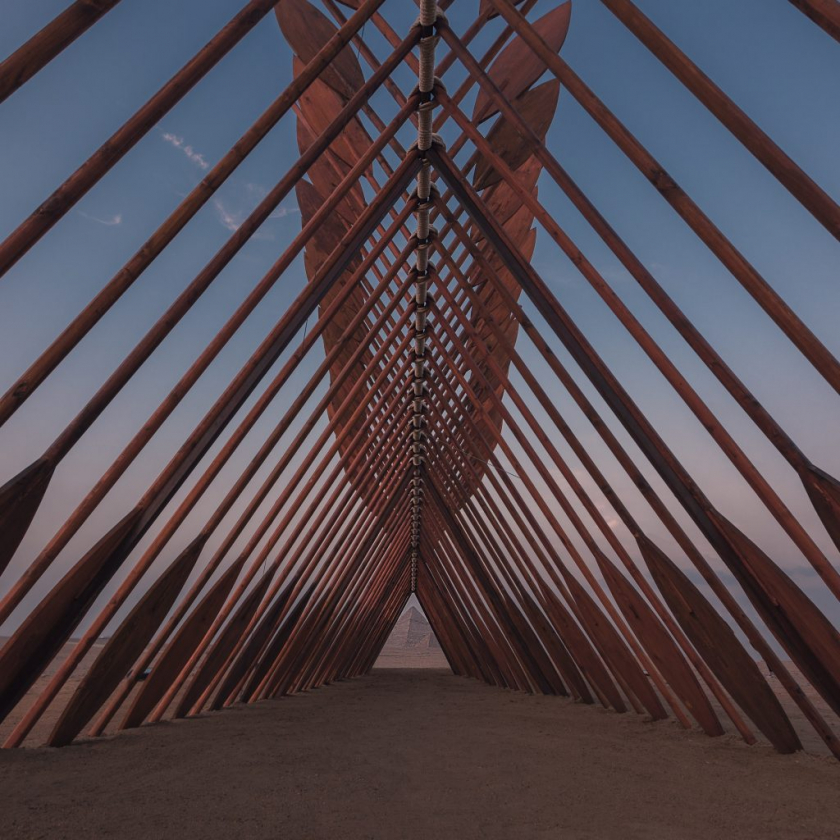
"Barzakh" (Realm of Barzakh) by Egyptian artist Moataz Nasr.
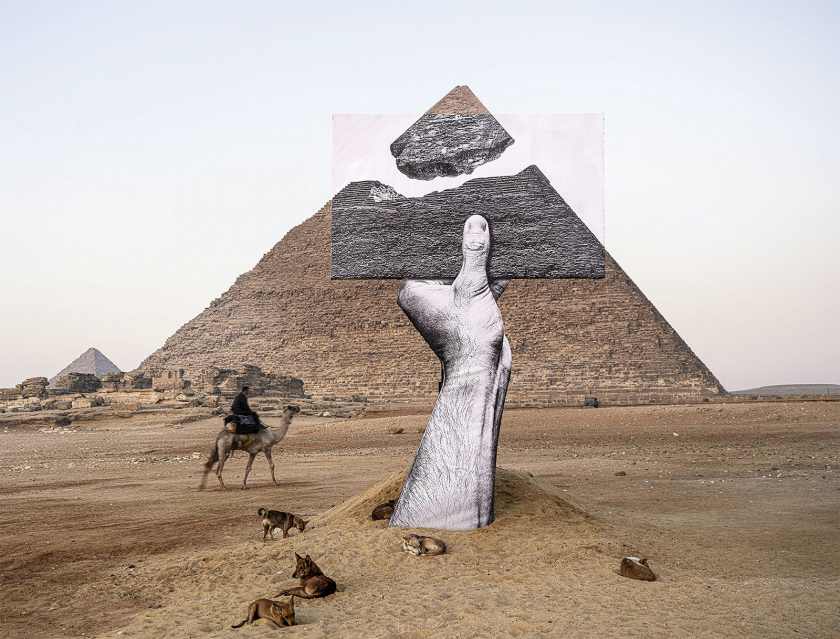
"Greetings from Giza" by French artist JR.
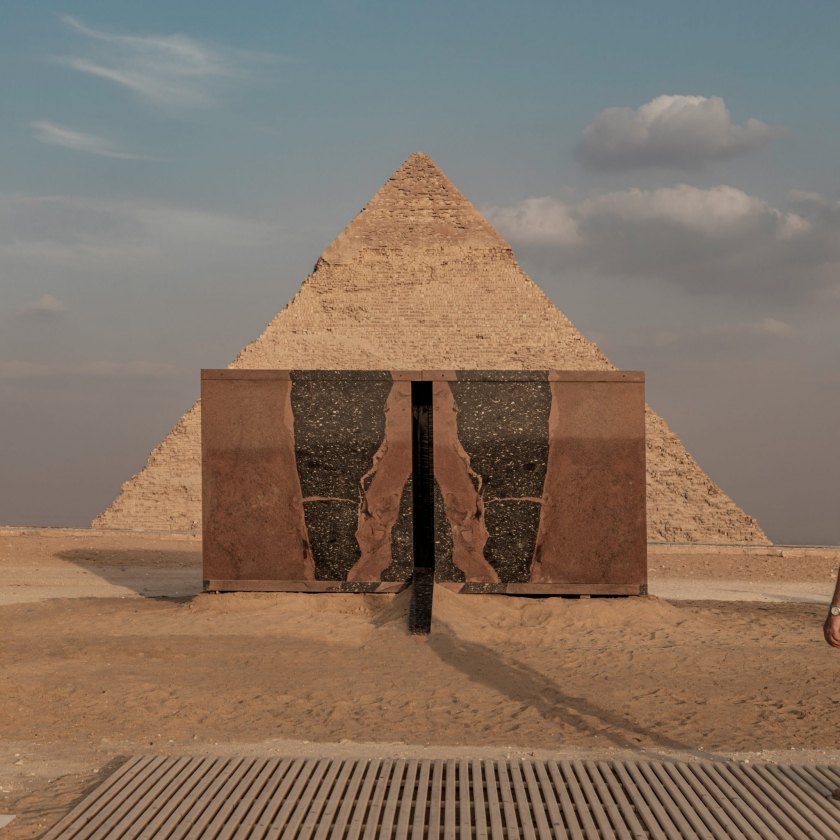
"Interior space Khafre" by British artist Stephen Cox RA.
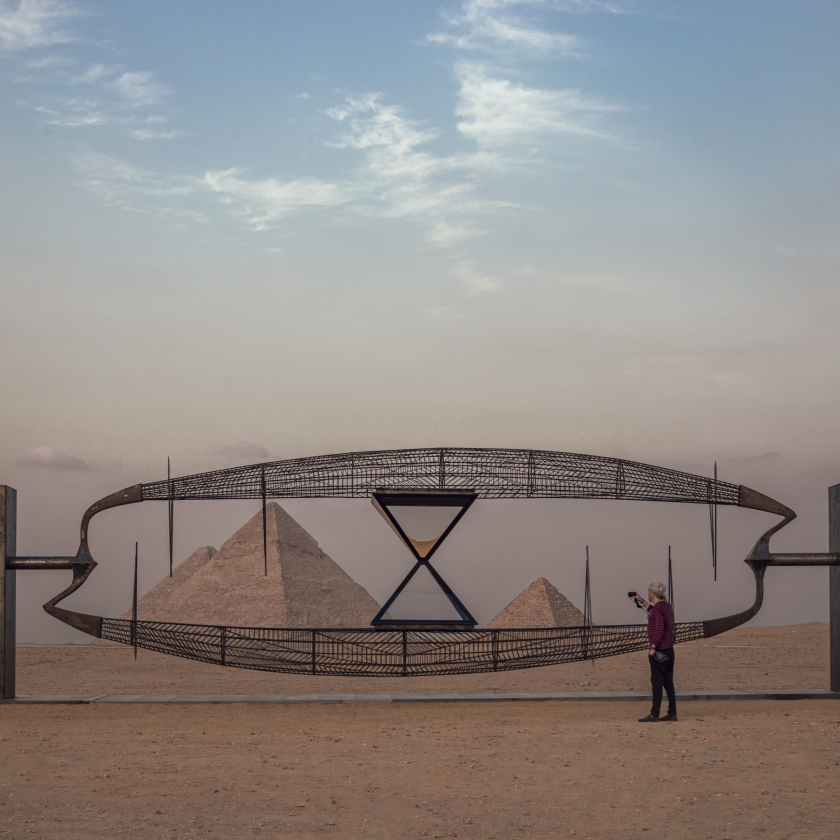
The work "Ouroboros" (The Ouroboros Ring) by Russian artist Alexander Ponomarev.
“The Pyramids have a long and glorious history and are an extraordinary architectural work of mankind, which has always been an endless source of inspiration for artists from all over the world. I am delighted to be able to create an unforgettable encounter for them, one that combines art, history and cultural heritage,” said Nadine Abdel Ghaffar, founder of Art D'Égypte.
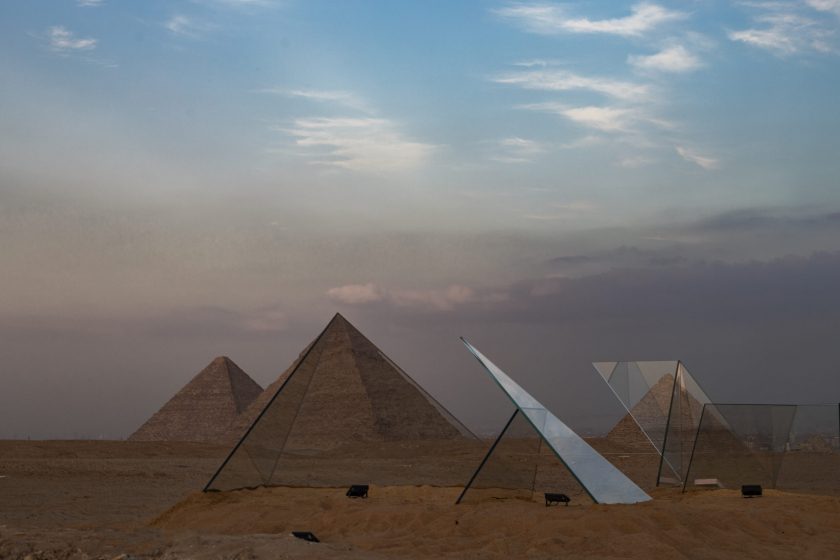
"Plan of the Path of Light" by British artist Shuster + Moseley.

“Together” by Italian artist Lorenzo Quinn.

"Here I have returned" by American artist Sherin Guirguis.
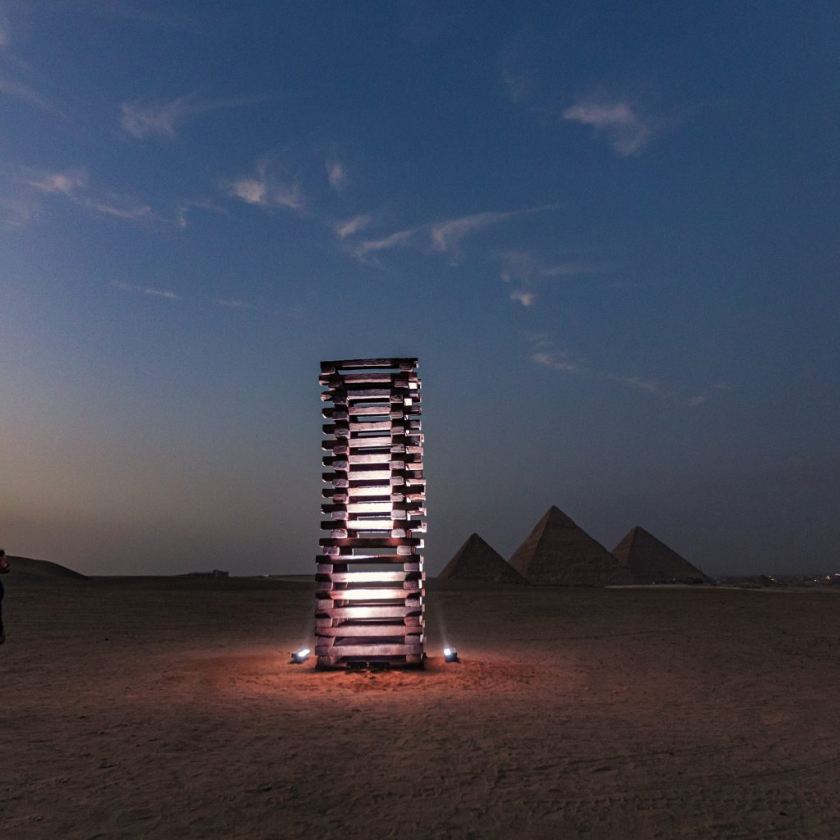
"Body That Rises" by Brazilian artist Joao Trevisan.
"Forever is now"
This exhibition is even more interesting with the appearance of a special artist, Ai-da -The world's first AI hyper-realistic robot artistHowever, she encountered a major challenge on her journey from the UK to Egypt, when Egyptian security forces detained her and her artwork at customs for 10 days, due to concerns about camera-related issues in her eyes. However, Ai-da was eventually able to attend the exhibition on October 21 with her artwork.
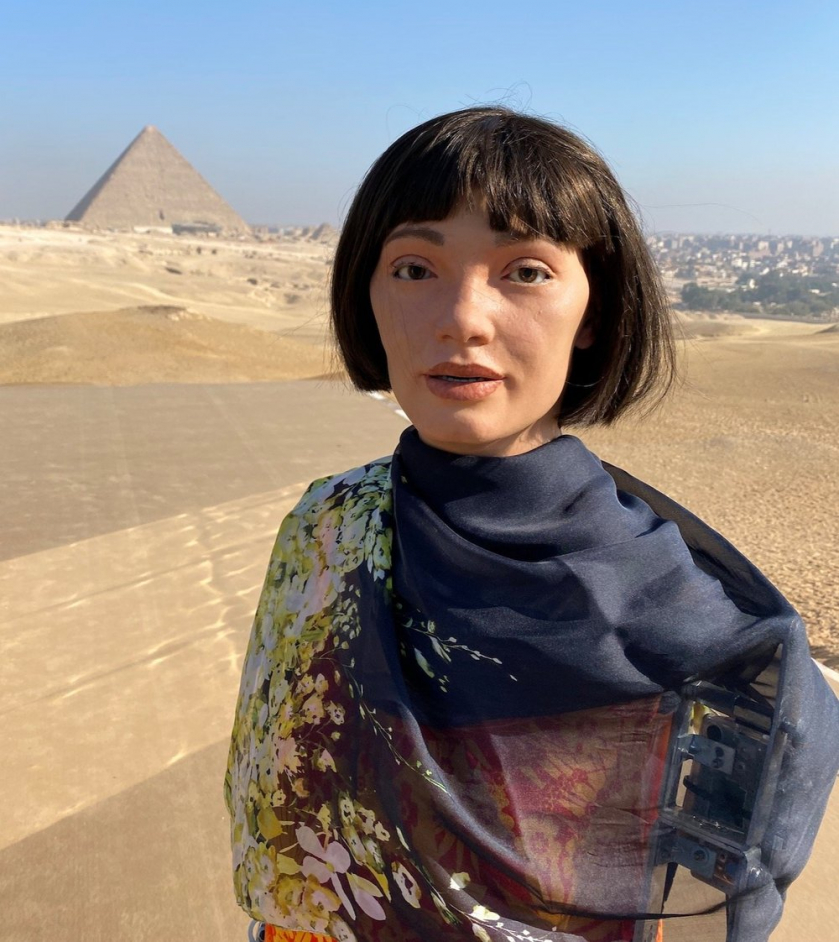
Aida appears at the Egyptian Pyramids.
Ai-da’s sculpture was inspired by the famous riddle of the Sphinx – a mythical Greek beast with the head of a human and the body of a lion, which once guarded the entrance to the city of Thebes. It would pose mysterious riddles to those who wanted to enter the city and would only allow them in if they gave the correct answer. “What creature walks on four legs in the morning, two legs at noon and three legs in the evening?” – the correct answer was “man”. This riddle describes the life cycle of a human being from birth, to adulthood and to old age when he needs a cane.
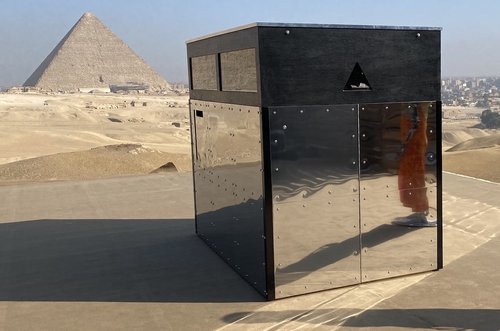
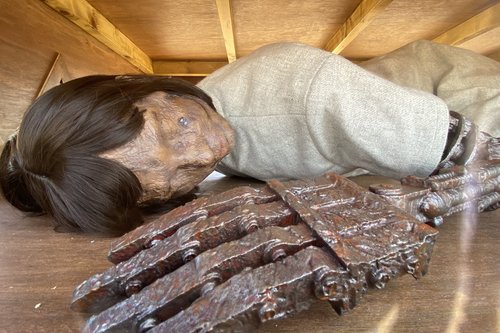

Ai-da displayed a work titled “Immortal Riddle” at the exhibition.
The sculpture of Ai-da references the ancient Egyptian concept of the afterlife along with the 21st century obsession with achieving immortality using biotechnology. Speaking about the piece, Aidan Meller, a British art dealer and creator of Ai-da, said: “Ai-da has created a giant version of herself with three legs. Today, with new Crispr technology and gene editing technology, extending human life is entirely possible. The ancient Egyptians did the same thing with mummification. In fact, humans have always had the desire to live forever.”
The exhibition will run from October 21 to November 7, 2021. Nadine Abdel Ghaffar said that the open-air art exhibition in Egypt was a new experience, adding: "The exhibition is a message of hope for humanity, especially in the context of the Covid-19 pandemic, when many countries have to implement domestic restrictions and close their doors to the outside world."





